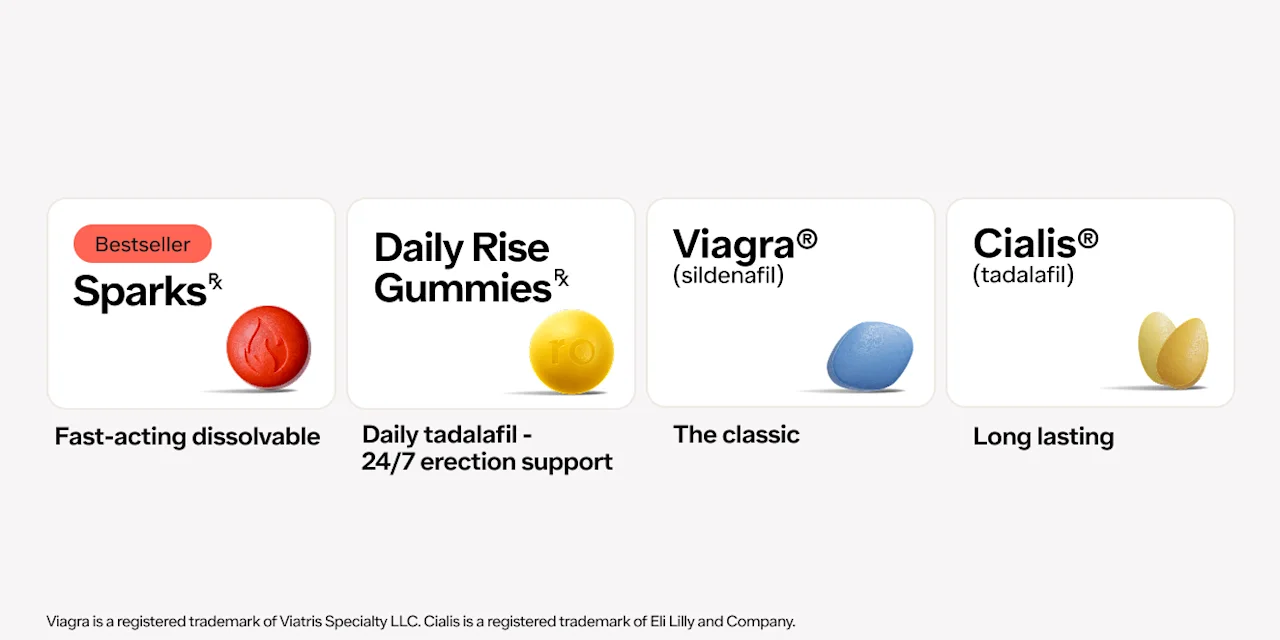Here's what we'll cover
Here's what we'll cover
Erectile dysfunction (ED) medications like Viagra, Cialis, and Levitra are extremely effective to treat erectile dysfunction. However, not everyone is an eligible candidate for ED medication. People taking certain medications like nitrates or alpha-blockers and/or people with certain health conditions like heart disease can’t safely take ED drugs. But if you fall into one of these categories–don’t despair. Using a penis pump for ED, often paired with a cock ring, can help you get and maintain firmer, longer-lasting erections for more satisfying sex. Continue reading to learn more.
Vacuum therapy
Erections are complicated. Your brain, blood vessels, nerves, mental health, and more all come together to achieve an erection. Whether the erection is triggered by a sight, sound, or physical stimulation, once set in motion, a series of events occurs to increase blood flow into the penis and decrease blood flow out of the penis, resulting in an erection (Panchatsharam, 2022).
If erectile dysfunction is preventing you from achieving an erection firm enough or long-lasting enough for satisfying sex, a penis pump for ED and constriction ring can help by pulling blood into the penis and keeping it there.
Vacuum constriction devices (VCDs), also called vacuum erection devices (VEDs), work by “forcing” an erection. The user places a plastic tube over the penis and pumps a vacuum to pull blood into it. Once the penis is erect, the user slides a constriction ring (also referred to as a cock ring) off the end of the tube and places it around the base of the penis. This keeps the blood in the penis and maintains the erection until the ring is removed (Rew, 2016).

Using suction to create an erection isn’t new. A man named Geddings Osbon, a tire manufacturer whose education ended after grade school, spent years applying his mechanical knowledge to create a device to restore intimacy between him and his wife.
In 1974, Osbon’s “Youth Equivalent Device” hit the market and was approved by the FDA in 1982. By the early 1990s, it was the most commonly prescribed treatment for erectile dysfunction (Hoyland, 2013).
Using a VCD can take some getting used to. Users might need to shave some pubic hair around the base of the penis to get a proper seal, and developing an erection can sometimes take a few minutes.
However, there is growing evidence that VCDs may be effective at penile rehabilitation for men with certain conditions. Some men who experienced erection problems after prostate surgery and used a VCD daily were eventually able to achieve natural erectile function, with erections hard enough for satisfying sex (Qian, 2016).
Side effects of vacuum therapy
Using VCDs is not without the risk of side effects or complications. One should not wear a constriction ring for more than 30 minutes or injury can occur. If too tight, the constriction ring can close off the urethra and block ejaculation. Because the tissue directly behind the ring does not get erect, this may create a “hinged” penis that doesn’t stick out from the body at the typical angle, even though it is erect. Adjusting for this can require some manual manipulation during intercourse (Lehrfeld, 2009).
You should not use a vacuum constriction device if any of the following apply to you (FDA, 2018):
You have sickle cell anemia.
You have a history of prolonged, painful erections, also known as priapism.
You take large quantities of aspirin.
You take anticoagulants (blood thinners) such as warfarin (brand name Coumadin)
All of the above increase the risk of bleeding issues when using a vacuum pump.
You should not use a VCD under the influence of alcohol or drugs, as they can impair judgment and dull pain, risking penile injury. If one passes out or falls asleep while wearing the constriction ring, it could cause permanent damage to the penis. And while it should go without saying, never use an electric pump near water due to risk of electrocution. That’s not the kind of charge you’re looking for.
One should not use a VCD that is not approved by the FDA. There are guidelines manufacturers must meet for FDA approval, including vacuum limiters and manual safety releases on the tube and constriction ring (FDA, 2018). There are numerous unapproved penis pumps on the market, and using a pump without safety features comes with high risk of injury.Talk to your healthcare provider or urologist before purchasing a penis pump for ED. Brands include Osbon, Encore Deluxe, Pos-T-Vac, and a number of others. In some cases, with a prescription, your insurance might even cover the cost.
Penile implant pumps

Another type of penile pump device, the inflatable penile prosthesis (IPP), is less complicated and relatively simple to use once in place. Typically, they’re made from two or three surgically implanted silicone balloons placed in the shaft of the penis. When inflated, they simulate an erection. Prostheses such as these are more invasive and often the final option when other non-surgical treatments have failed.
Inflatable penile implants aren’t filled with air from outside. The implants fill with a sterile saline solution stored in a reservoir. The user pumps the liquid from this reservoir to the main chambers and presses a hidden release valve to return it. Modern versions of this implant have a high success rate, and leakage is rare (Chung, 2017).
What is erectile dysfunction?
Erectile dysfunction (ED) is when a person cannot achieve or maintain an erection that lasts long enough or is hard enough for satisfying sex (Sooriyamoorthy, 2022). In some cases, ED is a symptom of an underlying medical condition or the side effect of a medication. In other cases, ED may be caused by performance anxiety, stress, and more.Whatever the cause, ED can be a heavy burden to carry for a sexually active person. Studies suggest that men with ED are almost three times more likely to have depression, and those with depression are 39% more likely to develop ED than those without (Liu, 2018). This can create a feedback loop that’s difficult to exit.If you experience erectile dysfunction, you’re not alone. Studies suggest that over half of men between the ages of 40 and 70 have experienced ED at some point in their lives (Sooriyamoorthy, 2022). Luckily, it’s highly treatable. Because ED can be caused by an underlying medical condition or medication, the first step to address ED for many people is to work with their healthcare provider to identify the trigger.
If a trigger can’t be identified or eliminated, the next step is often medication. ED medications are part of a class of drugs called PDE-5 inhibitors, which work by blocking the enzyme that triggers the release of blood from the penis phosphodiesterase type 5 (PDE5) inhibitors (Dhaliwal, 2022). These include sildenafil (brand name Viagra), tadalafil (brand name Cialis), vardenafil (brand name Levitra), and avanafil (brand name Stendra).
As mentioned above, if a person can’t take PDE-5 inhibitors, vacuum therapy with a penis pump, cock ring, or even a penile implant could provide a solution to achieve stronger erections.
If you experience ED and haven’t seen desired results with usual first-line therapies, don’t fret. There are many other options to explore with your healthcare provider, and penis pumps (both kinds) have produced great results for many men with ED.
DISCLAIMER
If you have any medical questions or concerns, please talk to your healthcare provider. The articles on Health Guide are underpinned by peer-reviewed research and information drawn from medical societies and governmental agencies. However, they are not a substitute for professional medical advice, diagnosis, or treatment.
Viagra Important Safety Information: Read more about serious warnings and safety info.
Cialis Important Safety Information: Read more about serious warnings and safety info.
Chung, E. (2017). Penile prosthesis implant: Scientific advances and technological innovations over the last four decades. Translational Andrology and Urology, 6 (1), 37–45. doi: 10.21037/tau.2016.12.06. Retrieved from https://pubmed.ncbi.nlm.nih.gov/28217449/
Dhaliwal A. & Gupta M. (2022). PDE5 inhibitors. StatPearls . Retrieved on Dec. 14, 2022 from https://www.ncbi.nlm.nih.gov/books/NBK549843/
Hoyland, K., Vasdev, N., & Adshead, J. (2013). The use of vacuum erection devices in erectile dysfunction after radical prostatectomy. Reviews in Urology, 15 (2), 67–71. Retrieved from https://pubmed.ncbi.nlm.nih.gov/24082845/
Lehrfeld, T. & Lee, D. I. (2009). The role of vacuum erection devices in penile rehabilitation after radical prostatectomy. International Journal of Impotence Research, 21 (3), 158–164. doi: 10.1038/ijir.2009.3. Retrieved from https://pubmed.ncbi.nlm.nih.gov/19225465/
Liu, Q., Zhang, Y., Wang, J., Li, S., et al. (2018). Erectile dysfunction and depression: A systematic review and meta-analysis. The Journal of Sexual Medicine, 15 (8), 1073–1082. doi: 10.1016/j.jsxm.2018.05.016. Retrieved from https://pubmed.ncbi.nlm.nih.gov/29960891/
Panchatsharam, P. K., Durland, J., & Zito, P. M. (2022). Physiology, erection. StatPearls . Retrieved on Dec. 14, 2022 from https://pubmed.ncbi.nlm.nih.gov/30020650/
Qian, S.-Q., Gao, L., Wei, Q., & Yuan, J. (2016). Vacuum therapy in penile rehabilitation after radical prostatectomy: Review of hemodynamic and antihypoxic evidence. Asian Journal of Andrology, 18 (3), 446–451. doi: 10.4103/1008-682X.159716. Retrieved from https://pubmed.ncbi.nlm.nih.gov/26289397/
Rew, K. T. & Heidelbaugh, J. J. (2016). Erectile dysfunction. American Family Physician, 94 (10), 820–827. Retrieved from https://pubmed.ncbi.nlm.nih.gov/27929275/
Sooriyamoorthy, T. & Leslie, S. W. (2022). Erectile dysfunction. In StatPearls. StatPearls Publishing. Retrieved from https://pubmed.ncbi.nlm.nih.gov/32965924/
U.S. Food and Drug Administration (FDA). (2018). External Penile Rigidity Devices - Class II Special Controls Guidance Document for Industry and FDA Staff (OMB 0910-0485), Washington, DC. Retrieved from https://www.fda.gov/medical-devices/external-penile-rigidity-devices-class-ii-special-controls-guidance-document-industry-and-fda-staff










